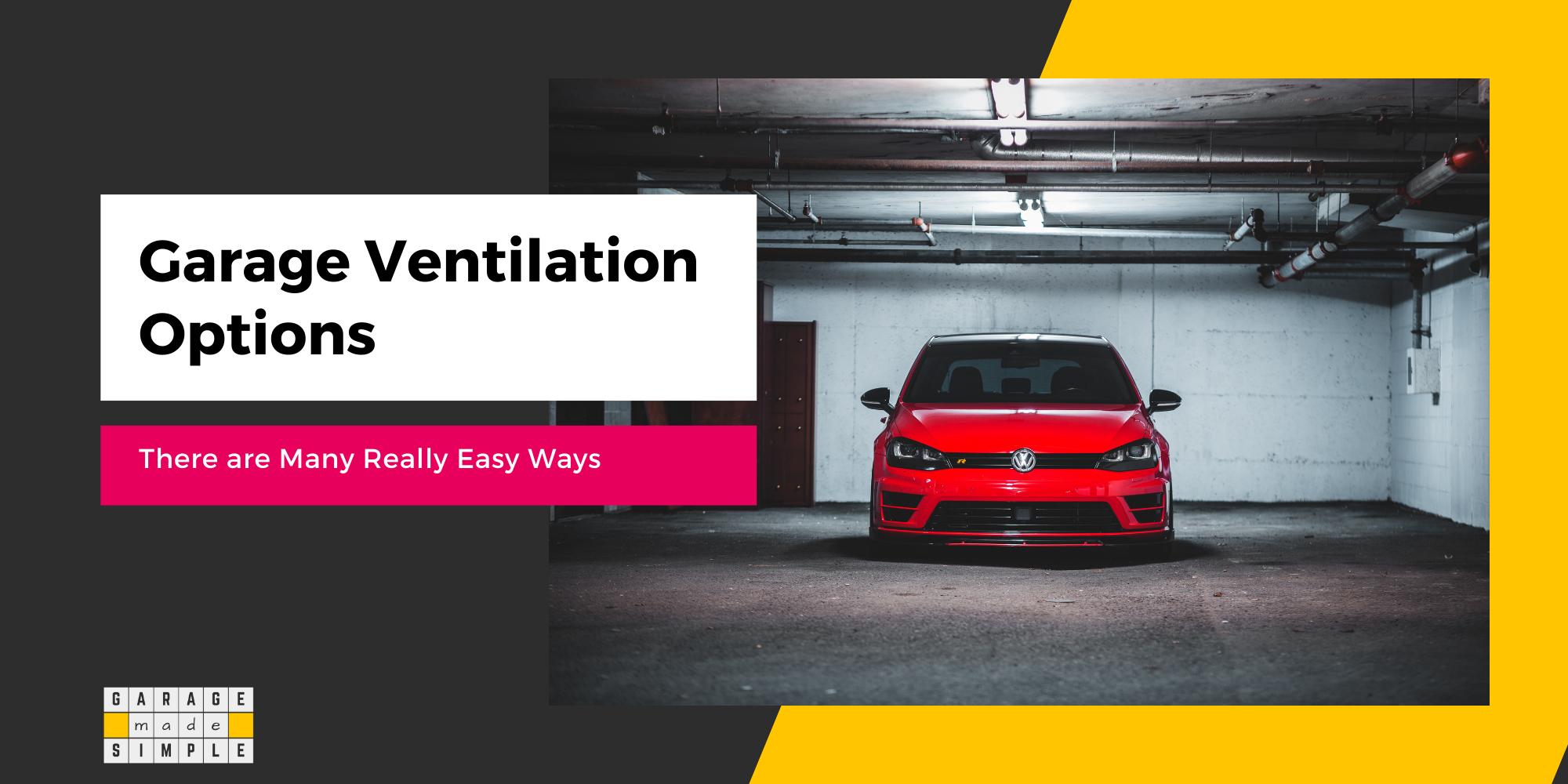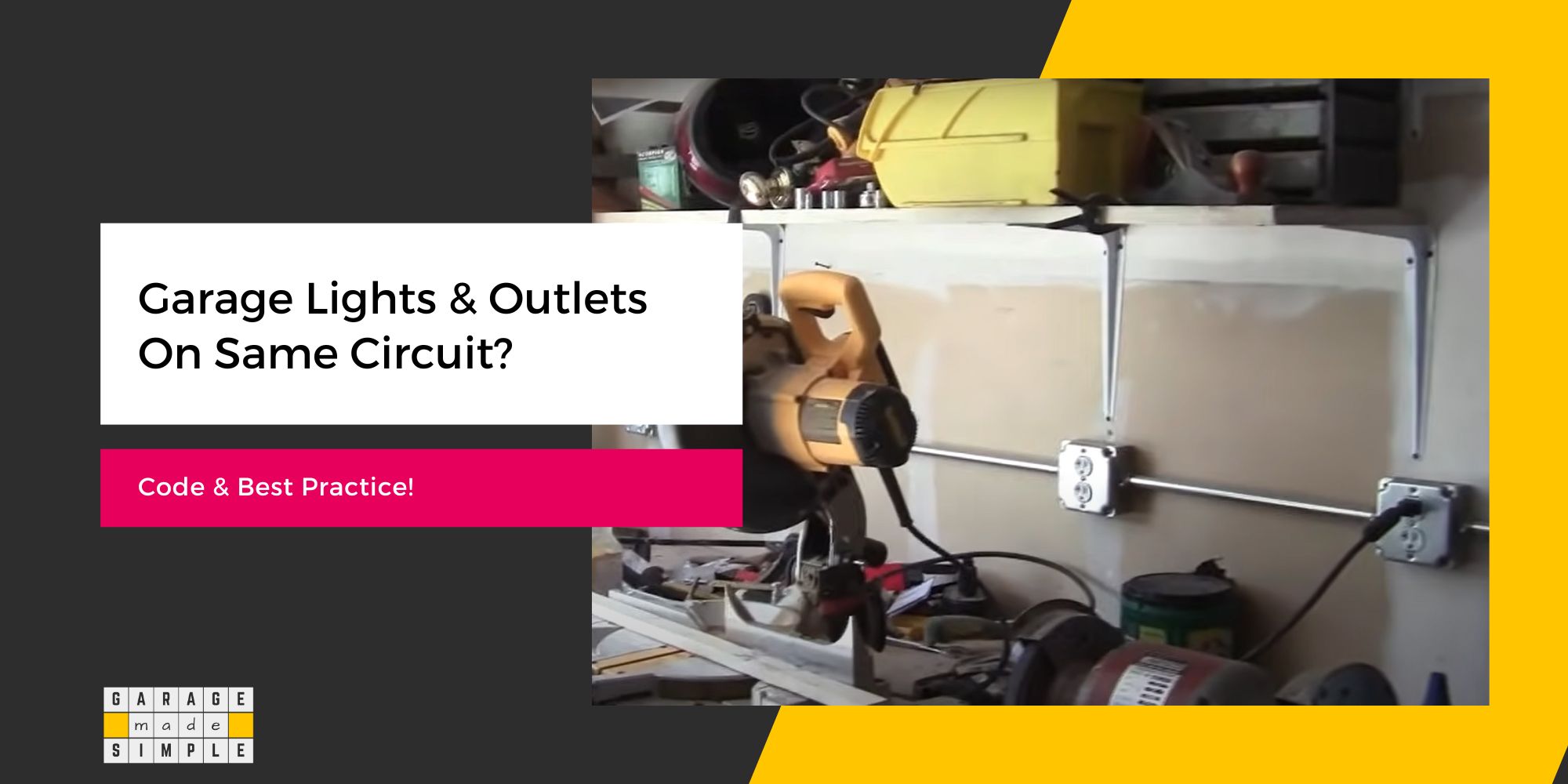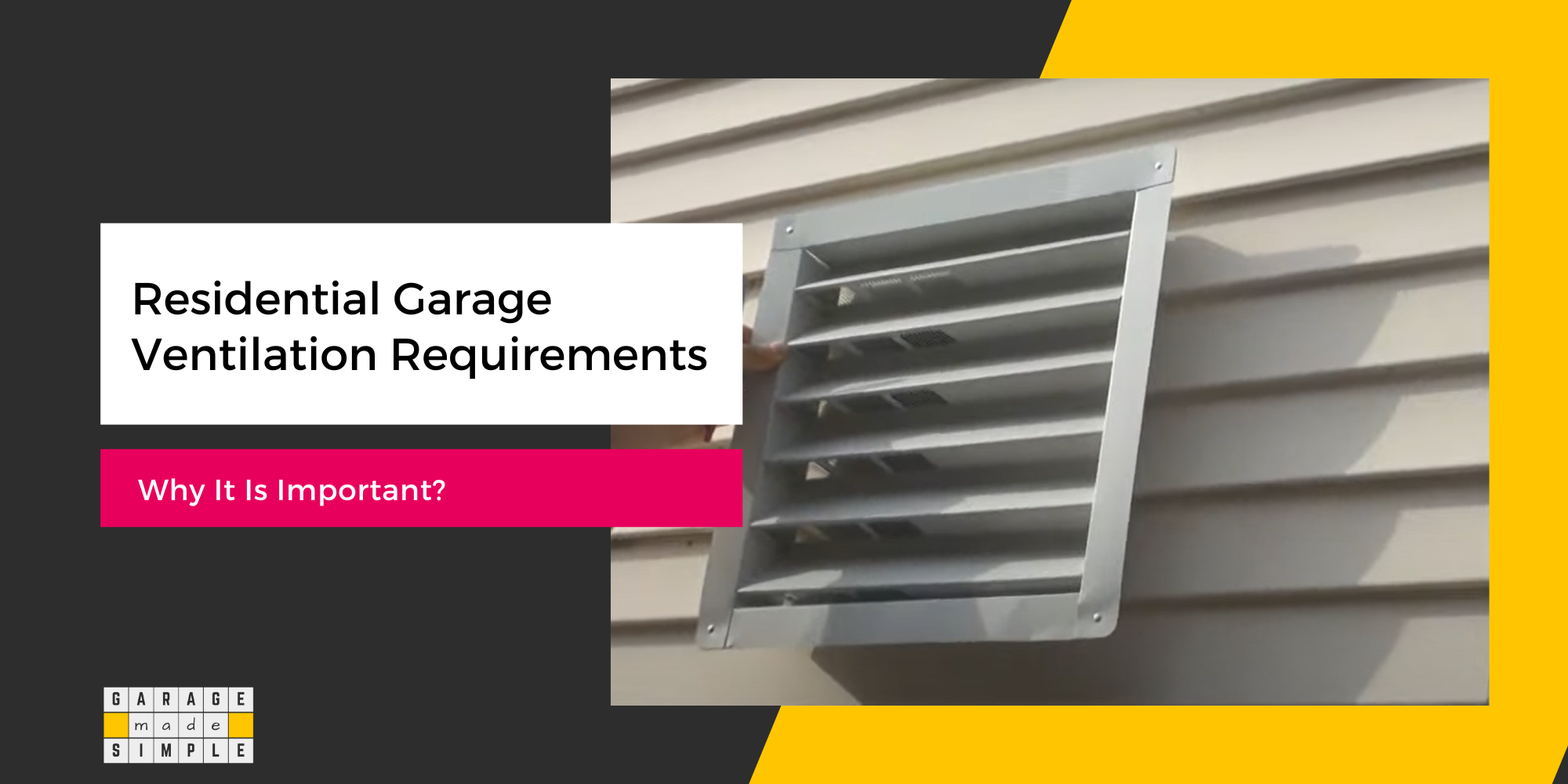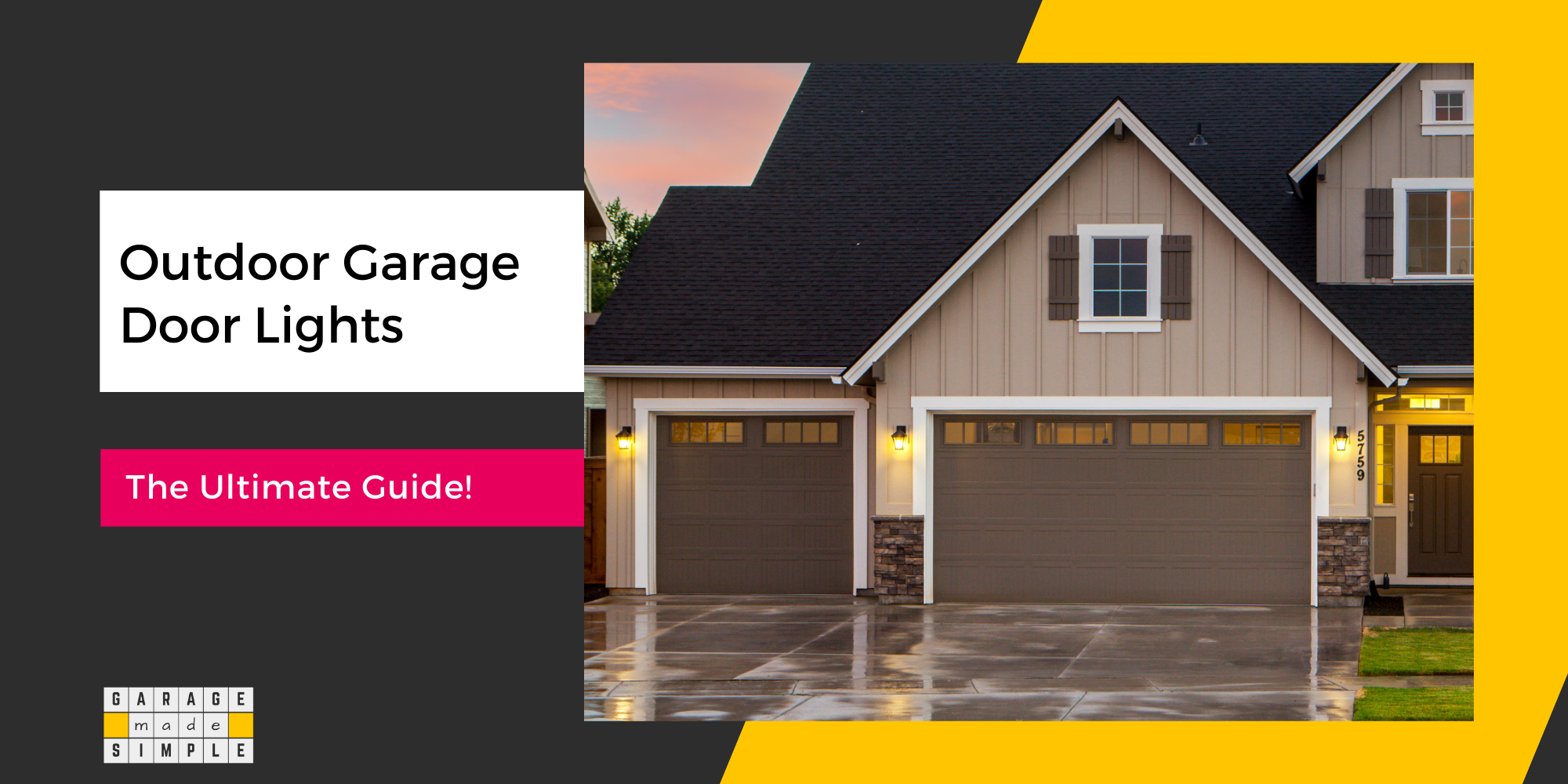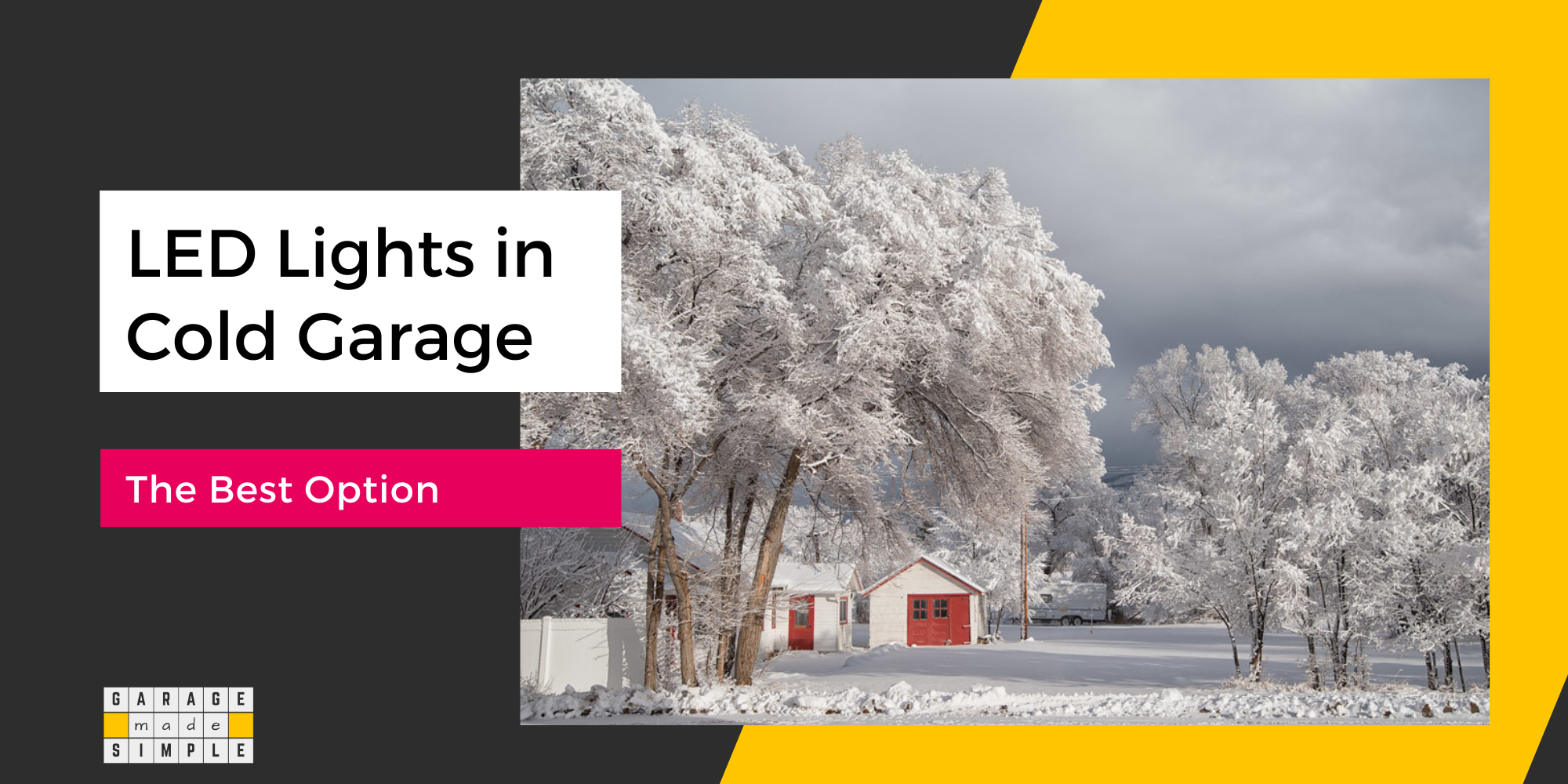How Many Lights Should a Garage Have? (A Quick Useful Guide!)
As an Amazon Associate, I earn from qualifying purchases.
How Many Lights Should a Garage Have?
Building a new garage or remodeling an existing one requires you to make several decisions. Garage internal lighting is an important one to ensure safety & security. So how many lights should your garage have?
You should have 8 to 12 lights for a 20’X20’ two car garage without a workshop. At 800 lumens per light bulb your garage will have 6,400 – 9,600 lumens.
Evenly spaced light bulbs will result in an average brightness level of 16 – 24 lumens per square foot. This is quite adequate for a residential garage.
It will not be necessary to turn on all the lights at the same time. For the most part you will be turning on only those above the parking bays. However, it is best to put in all the lights you may need at the construction or remodel stage.
| Garage Type | Size | Lights In General Area | Lights In Workshop Area | Total Lights In Garage |
| Standard 1 Car | 12’X20’ | 4 – 6 | NA | 4 – 6 |
| Standard 2 Car | 20’X20’ | 8 – 12 | NA | 8 – 12 |
| 2 Car with Workshop | 24’X24’ | 8 – 12 | 16 – 20 | 24 – 32 |
| Standard 3 Car | 22’X32’ | 12 – 20 | NA | 12 – 20 |
| 3 Car with Workshop | 26’X36’ | 12 – 20 | 20 – 28 | 32 – 48 |
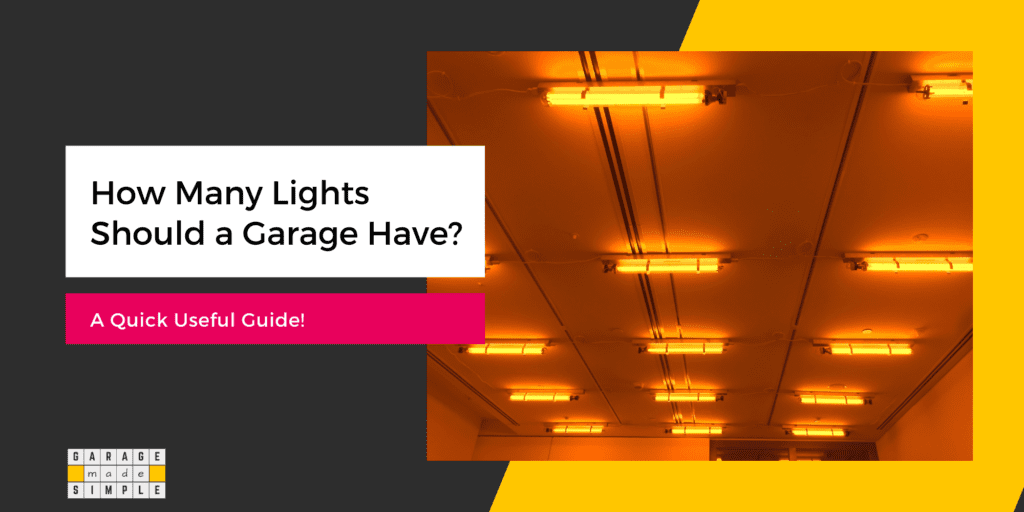
How Many Lumens Do I Need Per Square Foot?
Lumens per square foot is a measure of the brightness level. The brightness level required depends on how the space will be used.
You need lower brightness levels in a space where you rest & relax, such as the living room. You need higher brightness levels in a space where you need to concentrate on details such as a workshop.
The Illuminating Engineering Society (IES) has recommendations for residential, commercial and industrial zones. Architects and lighting professionals use this guideline to determine the lumens per square foot requirement for a specific space and client.
The table below will give you an idea of the range of acceptable brightness levels in the different zones of your home.
| Room / Area | Lumens Per Square Foot |
| Hallways | 5 – 10 |
| Living Room / Dining Room | 10 – 20 |
| Bedroom / Bathroom | 20 – 30 |
| Basement / Garage | 20 – 30 |
| Kitchen (General) | 20 – 50 |
| Kitchen (Prep Area) / Reading Desk / Workshop / Hobby Room | 50 – 100 |
To quickly calculate the total lumens required from the lights in your garage you can use this rule of thumb:
(Workshop area X 70) + (Remaining Garage Area X 20)
To arrive at the number of lights required, simply divide the total lumens required for the garage by the lumen output of each light bulb (typically 800 for a 9W LED bulb).
How Do You Compare Lumens to Watts?
Generally speaking, lumens are directly related to the wattage of the bulb. The higher the wattage, higher is the lumen output.
However this only applies when you compare lightbulbs using the same technology. The lumens to watts ratio changes dramatically when the technology used changes.
Electric light bulbs used the Incandescent Light Source (ILS) technology, ever since its invention by Thomas Edison. However, in recent decades fluorescent lights (CFL) and LED lights have become more commonplace.
The reason is simple. CFL & LED emit much higher lumens for the same wattage to make them far more efficient.
The following infographic is self-evident.
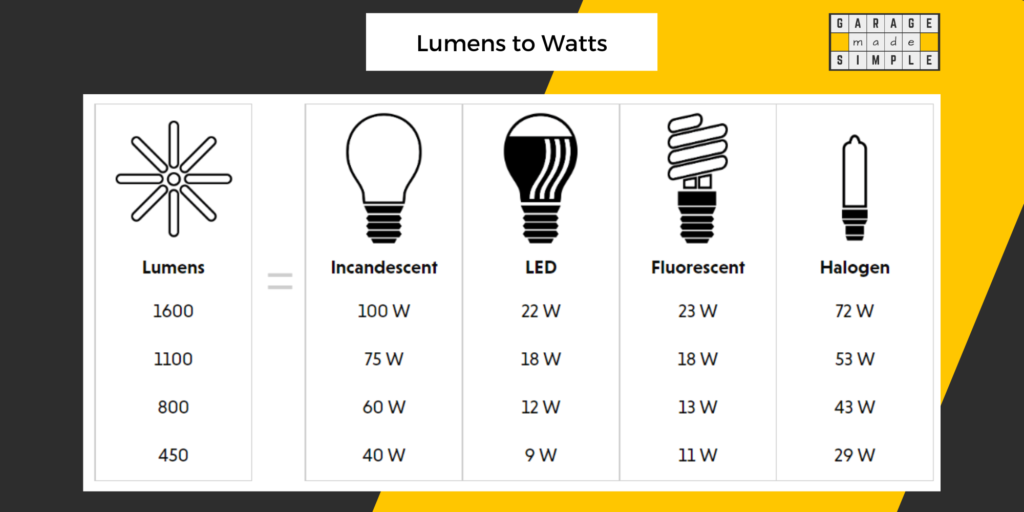
Energy cost conscious consumers are opting for LED or fluorescent lights. The initial cost of CFL or LED lights for your garage is higher than ILS but this is more than made up by longer life and lower running cost.
What Is the Relationship Between Lumens and Kelvin?
In reality there is no direct relationship between lumens and Kelvin.
Lumens is a measure of the brightness of the light limited from a light bulb. Kelvin is a measure of the hue or the color temperature of the light emitted. Low Kelvin light such as 3000 K is warm & yellowish white, whereas, high Kelvin light such as 7000 K is cold & bluish white.
High Kelvin makes the light crisper and helps you to pick out details better. As such it is also perceived to be brighter.
Typically you would use lower Kelvin light in the living room or bedroom but use a higher Kelvin light in a workspace such as kitchen or workshop.
Thank you very much for reading the post. I do hope you found it informative and useful.

